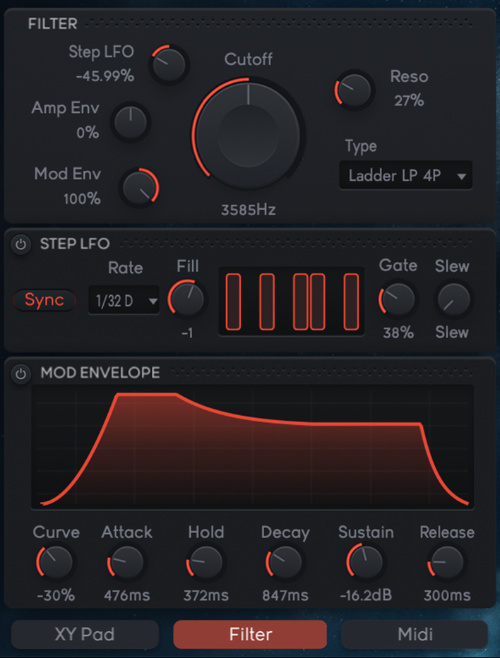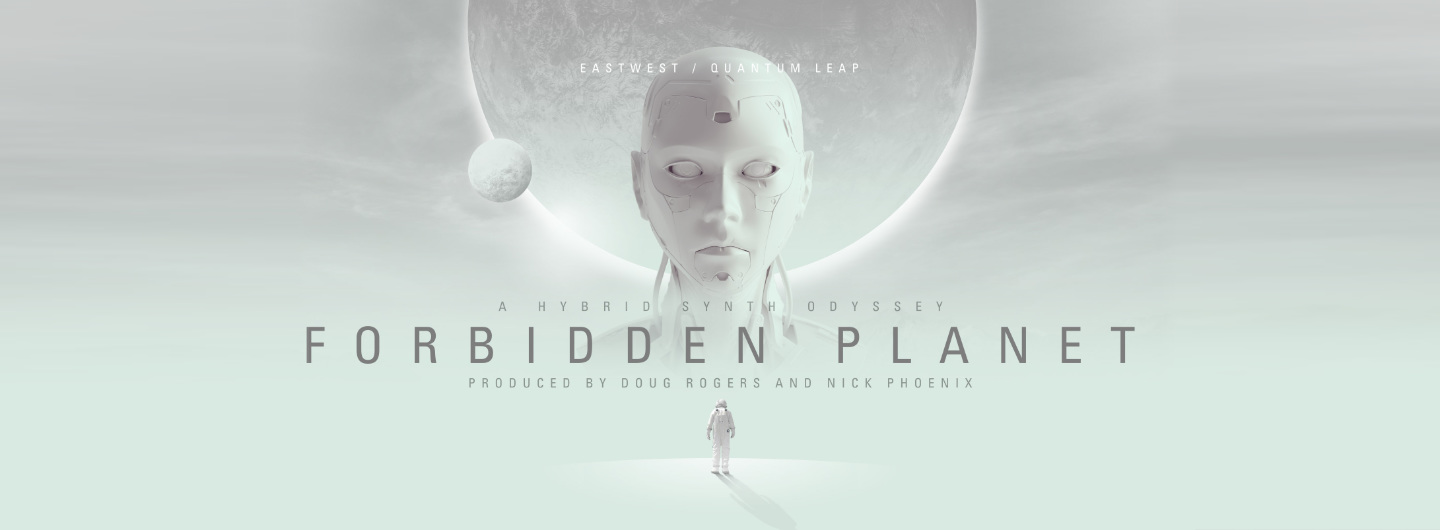EastWest recently released a virtual instrument they’re calling Forbidden Planet, and we have been given the opportunity to try it out. This impressive new hybrid library of synthesized and acoustic samples not only promises a high-quality sound, but also a powerful set of tools to help you create unique compositions that stand out from the crowd.
In this review, we’ll take a deep dive into what makes Forbidden Planet such a great resource for modern composers so you can decide if it’s the right library for you.
OVERVIEW
EastWest, renowned for their award-winning orchestral sample libraries, have created a brand-new virtual instrument that goes far beyond traditional boundaries. Their debut synth-acoustic hybrid – Forbidden Planet – is an awe-inspiring cauldron of analog electronic sounds fused with orchestral instruments and vocal recordings.
Forbidden Planet is powered by EastWest’s very own free sample engine called OPUS which builds upon the company’s classic PLAY engine they used for decades. The library contains a whopping 54 GB of samples that have been turned into 645 unique sample instruments. These include all sorts of arpeggiators, basses, drones, FX, leads, pads, and poly synths.
THE INSTRUMENT
Forbidden Planet comes with a futuristic-looking interface that holds a multitude of control options and performance controls. At the core of the instrument are two sound engines that can each hold and play back individual source samples. Each of the 645 presets offers a unique blend of two distinct sound sources, often combining a synth sample with an acoustic sample. If you want to get creative yourself, the two samples can be chosen freely from the library’s vast collection of analog, acoustic, synthetic, and large-scale cinematic sounds.
The centerpiece of the user interface is a beautiful graphic of a blue planet with a red moon in its orbit. Apart from looking nice, this graphic is actually a control, more precisely an XY pad. This XY pad allows users to seamlessly control the blend of the two selected sound sources as well as the cutoff point of a filter. This makes it easy to perform and record smooth but drastic changes in sound, timbre, and tone.

To the left and right of the XY pad, users will find many more control options to fine-tune and modulate a given sound. These include ADSR envelope controls, transposition, two arpeggiators, two ring modulators, an automatic panner, four freely assignable insert FX slots, a delay, a reverb as well as a master output section.
A minor drawback of the XY pad at the time of writing this review is that its parameters are locked to the source sound blend and filter cutoff. It would have been great if users would have been given the option to freely assign performance parameters to XY pad.
Forbidden Planet also comes with its own, dedicated filter section, LFO, and mod Envelope which are all accessible by clicking on the little “Filter” tab below the blue planet XY pad.

This huge amount of parameters yields an incredibly wide range of sonic possibilities and room for experimentation – an exciting playground for sound designers. All these features make this library not just a great tool for experienced producers and composers though, but the macro controls and XY pad are also easily accessible tools for those starting out in their music production journey.
THE SOUNDS
Forbidden Planet’s immense collection of 645 instruments ranges from the pristine and powerful sounds of modern music production to more retro, experimental, and saturated sounds. While offering a broad range of musical influences and genres, you can definitely make out the developer’s long years of experience in cinematic music: most preset instruments carry a strong sense of scale and Hollywood-like grandiosity, which is perfect if you are a film composer, trailer music producer or want to inject some cinematic epicness into your electronic music.
The unique array of sounds includes classic vintage synth samples as well as cutting-edge modern synth sounds, giving producers the ability to craft any type of soundscape they could possibly imagine. Whether it’s for movie scoring, video game sound design, or creating cinematic hip-hop beats, Forbidden Planet delivers it all in one comprehensive package. With so many sounds on offer, ranging from subtle atmospheres to thundering basslines, Forbidden Planet promises something for everyone – whether you’re an experienced professional or a bedroom producer just getting started.
AUDIO DEMOS
Click on the button to load the content from w.soundcloud.com.
USING FORBIDDEN PLANET
Forbidden Planet’s convenience and accessibility make it ideal for those working in the industry who are on tight deadlines. However, scratch beneath the surface and a wealth of impressive features is revealed. You can easily get lost in the many functions and sound manipulation options the UI offers.
For instance, the filter section not only offers a high- and low-pass filter, but it also houses a filter envelope generator as well as four distinct filter types and also includes a step LFO with its own set of dedicated controls. This level of detail is consistent in most of the available functions, which – provided you dare to take a look under the hood – allows users to create stunningly rich soundscapes with ease.
The OPUS engine marks a huge progress from the old PLAY engine. It runs fast and smooth and is easy to navigate. The engine allows you to load multiple instruments from different (OPUS-ready) EastWest products into one instance of the sampler in order to combine and layer sounds. There is also a dedicated MIDI Tools page, that provides a huge array of modules for customizing your performance.
CONCLUSION
EastWest’s Forbidden Planet is a top-of-the-line virtual instrument that comes packed with features and controls geared toward modern media composers and music producers. The comprehensive library of sounds and instruments provides an expansive sonic palette that can be used to create music in various genres from expansive film soundtracks to hart-hitting hip-hop and EDM. Furthermore, Forbidden Planet is part of EastWest’s Composer Cloud+ subscription, making it a great free addition for those who already utilize this platform.
At a regular price of $399, the instrument itself is rather expensive when compared to its competitors, but the sound quality is on par with some of the best out there and the vast amount of predesigned sounds is pretty much unrivaled. With such an extensive library of samples and instruments, along with all those powerful functions and modulation options, you’re sure to find something that suits your production needs.
Pros
- Massive collection of sounds and presets
- Countless sound-shaping and modulation options
- Many onboard FX
- Stable and smooth sample engine
Cons
- High price point (if not used in subscription model)
- Getting one’s head around the UI’s many features can be intimidating
RECOMMENDED: 9/10
Forbidden Planet is part of EastWest’s new year’s sale and is offered at a 60% discount at the moment. The library is currently available for $159.60 (regular price $399) through EastWest’s Soundsonline shop or comes free as part of the Composer Cloud+ subscription service.


0 comments on “EastWest – Forbidden Planet (Review)”